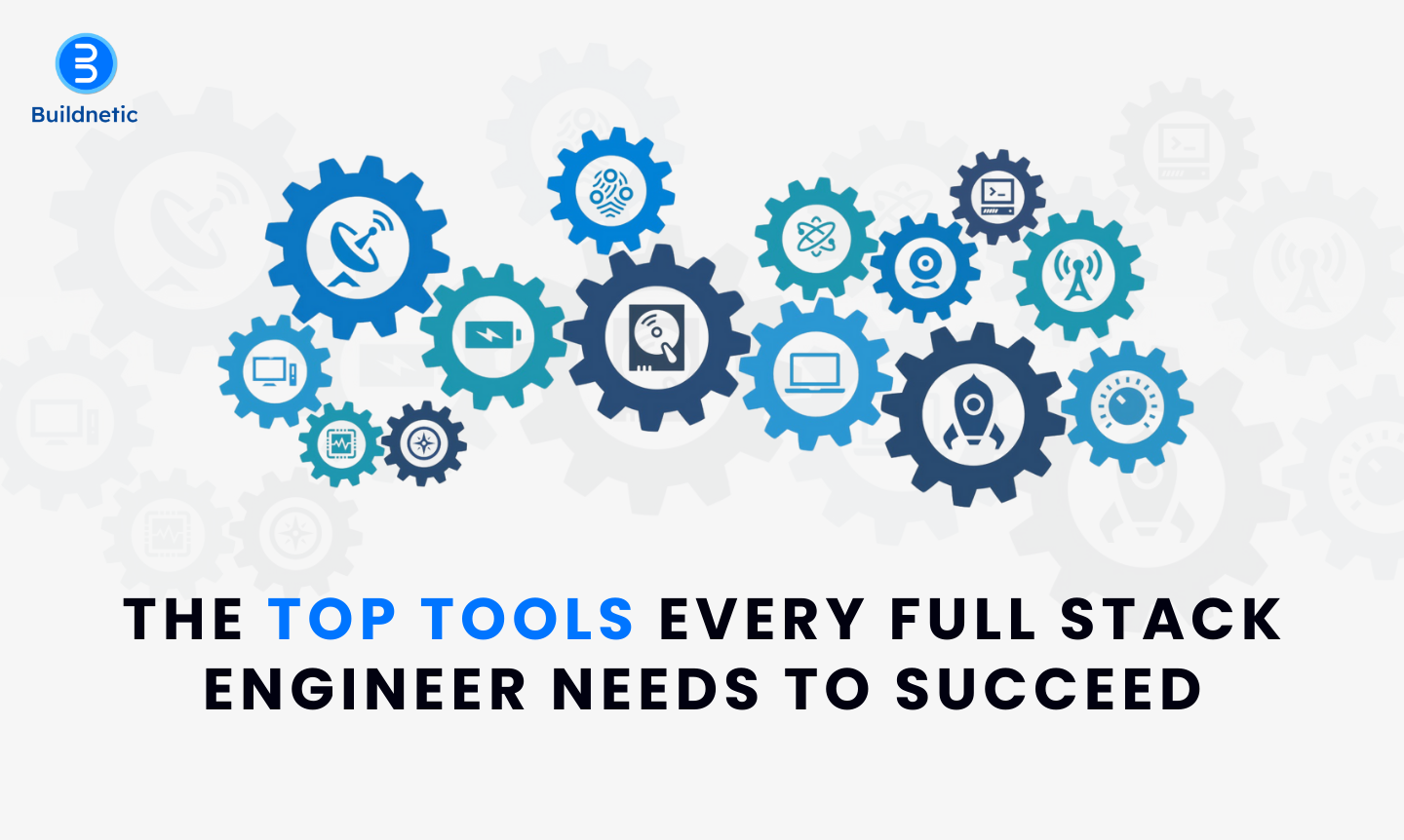
The world of web development is a vast landscape, and full-stack engineers are the versatile explorers who navigate it all. They possess the knowledge and skills to bridge the front-end (user-facing interface) and back-end (server-side logic) of web applications. This makes them invaluable assets in today's digital age, where businesses are constantly striving to create innovative and user-friendly web experiences.
In today's competitive digital landscape, finding and retaining top talent is crucial. Buildnetic, with its expertise in brand creation and client needs identification, can assist companies in outsourcing skilled full-stack engineers. By leveraging Buildnetic's network and proven recruitment processes, companies can gain access to a pool of talented developers who can seamlessly integrate into their existing teams and contribute to the success of their web projects.
But even the most skilled full-stack engineer needs the right set of tools to succeed. These tools streamline workflows, enhance efficiency, and ultimately contribute to the creation of exceptional web applications.
Let's look into some of the top categories of tools that every full-stack web developer should have in their skill sets;
-
Coding Editors and IDEs -
The foundation of any developer's toolkit is a powerful code editor or Integrated Development Environment (IDE). These tools provide a platform for writing, editing, and debugging code. Popular options include Visual Studio Code, a versatile and customizable editor with a vast plugin ecosystem.
For those seeking a more comprehensive environment, IDEs like WebStorm offer advanced features such as code completion, refactoring tools, and built-in debuggers. These features can significantly improve development speed and code quality. -
Version Control Systems (VCS) -
Collaboration is key in modern web development, and a Version Control System (VCS) is an essential tool for managing code changes. VCS like Git allows developers to track changes made to code over time, revert to previous versions if necessary, and collaborate seamlessly with other developers on the same project.
Buildnetic, with its expertise in digitalization, can highlight the importance of a VCS in ensuring clear communication and streamlined development workflows within a team. -
Front-End Development Tools -
The front-end, or user-facing interface (UI) of a web application, is what users interact with directly. Full-stack engineers need a variety of tools to craft visually appealing and interactive UIs. Some of the most popular tools include:
-
HTML, CSS, and JavaScript
These are the fundamental building blocks of the web. A solid understanding of these languages is essential for any full-stack engineer. -
Front-end frameworks
Frameworks like React, Angular, and Vue.js provide pre-built components and functionalities that simplify front-end development. These frameworks can significantly improve development speed and code maintainability. -
Preprocessors
Tools like Sass and Less extend the capabilities of CSS, allowing developers to write more maintainable and scalable stylesheets.
-
HTML, CSS, and JavaScript
-
Back-End Development Tools -
The back end, or server side, is the engine that powers a web application. Full-stack engineers need a strong understanding of back-end technologies to handle tasks like data storage, server communication, and application logic. Here are some essential back-end development tools:
-
Programming Languages
Languages like Python, Java, Node.js, and PHP are widely used for back-end development. Each language has its strengths and weaknesses, and the choice of language often depends on the project's specific requirements. -
Databases
Relational databases like MySQL and PostgreSQL are popular choices for storing and managing application data. NoSQL databases like MongoDB offer an alternative for storing unstructured data. -
APIs
APIs (Application Programming Interfaces) allow different parts of an application or even different applications to communicate with each other. Understanding APIs is crucial for building modern web applications.
-
Programming Languages
-
Testing and Debugging Tools -
Even the best developers write code with bugs. A good set of testing and debugging tools is essential for identifying and fixing these bugs before they reach production. Popular testing frameworks include Jest and Mocha, while debugging tools like Chrome DevTools provide invaluable insights into application behavior. -
Project Management Tools -
Full stack engineers are often involved in all stages of the development process, from planning and design to development and deployment. Project management tools like Asana and Trello can help them stay organized, track progress, and collaborate effectively with other team members.
Buildnetic's consulting expertise can extend to recommending and implementing the most effective project management tools for a full-stack engineer's workflow. -
Build and Deployment Tools -
Once an application is developed and tested, it needs to be deployed to a production server. Build and deployment tools automate this process, ensuring a smooth transition from development to production. Tools like Jenkins and Docker are popular options for automating builds and deployments.
As the demand for full-stack web developers continues to rise, finding the right talent can be a challenge. Buildnetic's consulting expertise can come in handy here as well. They can help companies not only identify the right tools and technologies for their projects but also bridge the talent gap by providing access to a global pool of skilled full-stack developers. By partnering with Buildnetic, companies can focus on their core business objectives while leaving the task of finding and managing top-tier development talent to the experts.
The landscape of web development is constantly evolving, and new tools emerge all the time. However, the core principles of full-stack development remain the same. By mastering the tools mentioned above and staying up-to-date with the latest trends, full-stack engineers can continue to build innovative and successful web applications.